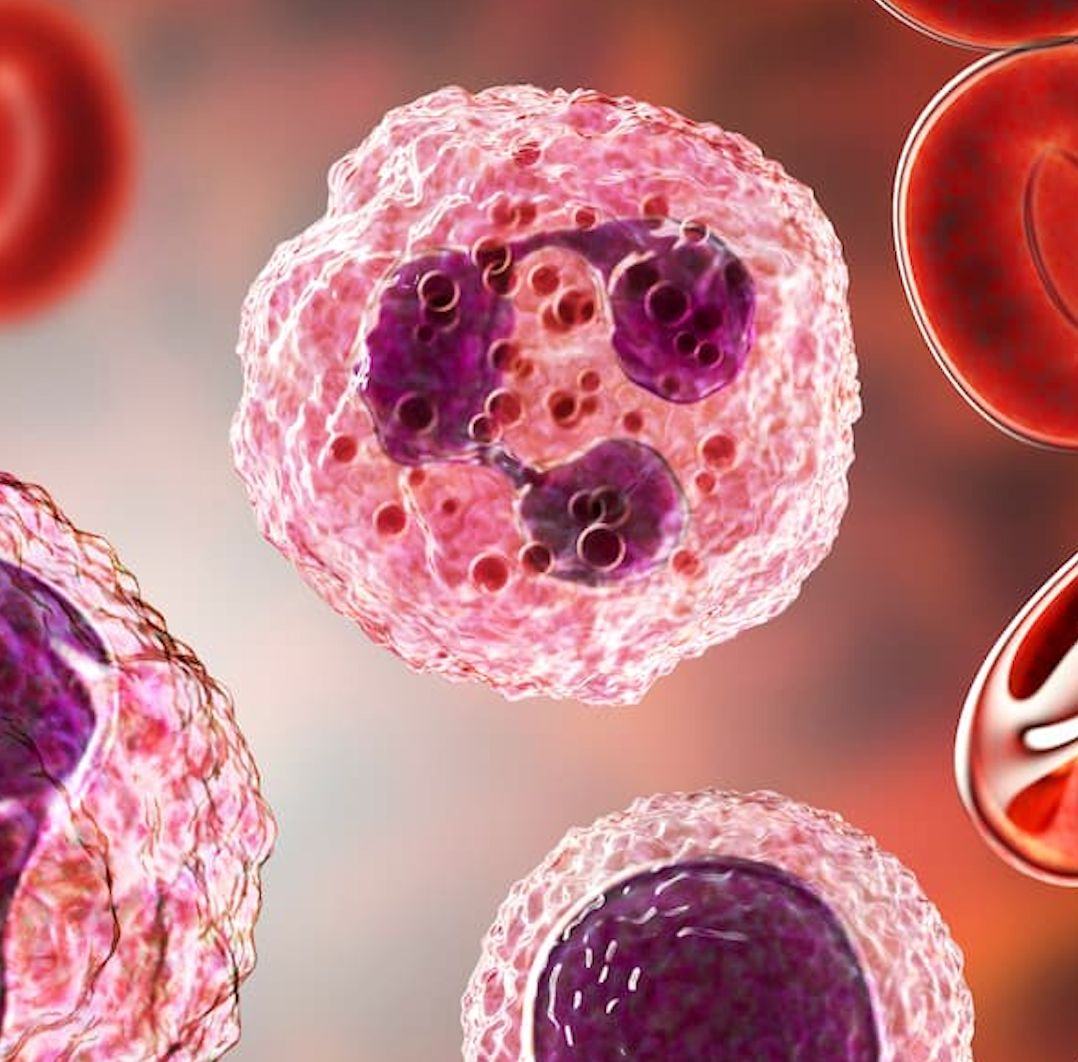Article
Novel Hub Gene GPX3 May be Viable Target for Rheumatoid Arthritis Treatment
Author(s):
GPX3, an antioxidant enzyme and reactive oxygen species scavenger, was categorized as a hub gene in rheumatoid arthritis neutrophils.
The novel hub gene glutathione peroxidase 3 (GPX3) is associated with the neutrophil-driven oxidative stress-mediated pathogenesis of rheumatoid arthritis (RA), according to research published in Arthritis Research & Therapy.1 Investigators believe these findings may have the potential to be a target for neutrophil-directed RA treatment.
Credit: Adobe Stock/Dr_Microbe

Although the pathogenesis of RA is not completely understood, the current hypothesis is the primary risk factor is a loss of immune tolerance, caused by a combination of environmental and genetic factors. Neutrophils have been identified as important key immune cells in RA progression and pathogenesis, including immune tolerance and synovial joint inflammation.
Neutrophils contain highly toxic proteases that are released at inflammation sites, can secrete pro-inflammatory cytokines and chemokines, which lead to more inflammation, and can contain externalized citrulline proteins as a source of modified autoantigens to produce anti-citrullinated protein antibodies (ACPAs).2
“Neutrophils have a critical role in the pathogenesis of RA with immune system dysfunction,” wrote a team of international investigators. “However, the molecular mechanisms of this process mediated by neutrophils still remain elusive. This work provides a broad insight into the neutrophils’ molecular features in developing RA on the transcriptome level. Together, these results support the view that neutrophils are important targets for the diagnosis and therapy of RA.”
Hub genes in neutrophils that may be used for the diagnosis and treatment of RA were identified using publicly available datasets. Gene expression profiles were collected from the Gene Expression Omnibus, and batch-corrected and normalized expression data were collected via the ComBat package. A significantly functional analysis and crucial pathways we performed using Gene Ontology (GO) and the Kyoto Encyclopedia of Genes and Genomes (KEGG) enrichment analysis. A statistical analysis was conducted via the GraphPad Software and graphs were created by GraphPad Prism 9 and FlowJo v10.
The weighted gene co-expression network analysis and visualization by Cytoscape aided in the generation of co-expression genes modules and hub genes. Reactive oxygen species (ROS) levels in neutrophils were detected using flow cytometry.
The heterogeneity of peripheral blood (PB) and synovial fluid (SF) in patients with RA were assessed using 3 datasets. Neutrophils underwent transcriptional alterations in SF of patients with RA, which were different from peripheral blood of healthy controls or patients with RA. Particularly, they affected the NADH metabolism, HIF-1 signaling, glycolysis, and oxidative stress. These hub genes were strongly associated with classical glycolysis-related genes, including ENO1, GAPDH, and PKM, which are responsible for ROS production.
GPX3, an antioxidant enzyme and ROS scavenger, was categorized as a hub gene in RA neutrophils. Markedly enhanced ROS levels, particularly in RA SF, were observed in the neutrophils from patients with autoinflammatory and autoimmune diseases when compared with the healthy controls. Neutrophils from the SF of patients with RA had higher ROS levels when compared with matched PB. An oxidative burst of neutrophils was seen in patients with autoinflammatory and autoimmune diseases; however, the underlying mechanisms require further research.
Investigators noted that the small number of clinical samples in each group for validating hub genes limited the study. They encouraged future studies to consider this limitation to verify these results.
“A novel hub gene GPX3 may be the potential biomarker for diagnosis and treatment of RA,” investigators concluded. “These findings reinforce our understanding of the underlying molecular pathogenetic role of neutrophils in RA and provide insights for the development of neutrophil-targeted therapies.”
References
- Chen T, Zhou Z, Peng M, et al. Glutathione peroxidase 3 is a novel clinical diagnostic biomarker and potential therapeutic target for neutrophils in rheumatoid arthritis. Arthritis Res Ther. 2023;25(1):66. Published 2023 Apr 22. doi:10.1186/s13075-023-03043-5
- Wright HL, Moots RJ, Edwards SW. The multifactorial role of neutrophils in rheumatoid arthritis. Nat Rev Rheumatol. 2014;10(10):593–601.




